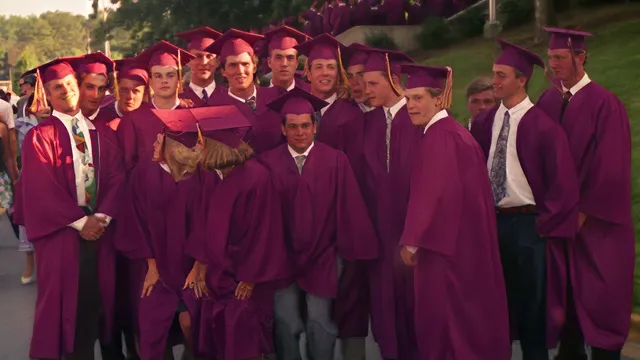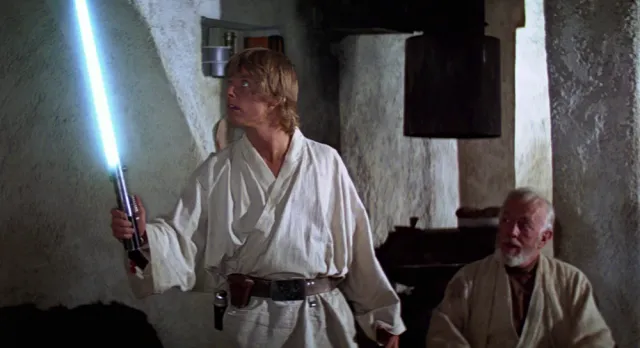Philosophy in Jung's Transcendent Function
An exploration of Jung's transcendent function, its origins, dialectical roots, and impact on psychology, with reflections on Jung, Hillman, and von Franz.
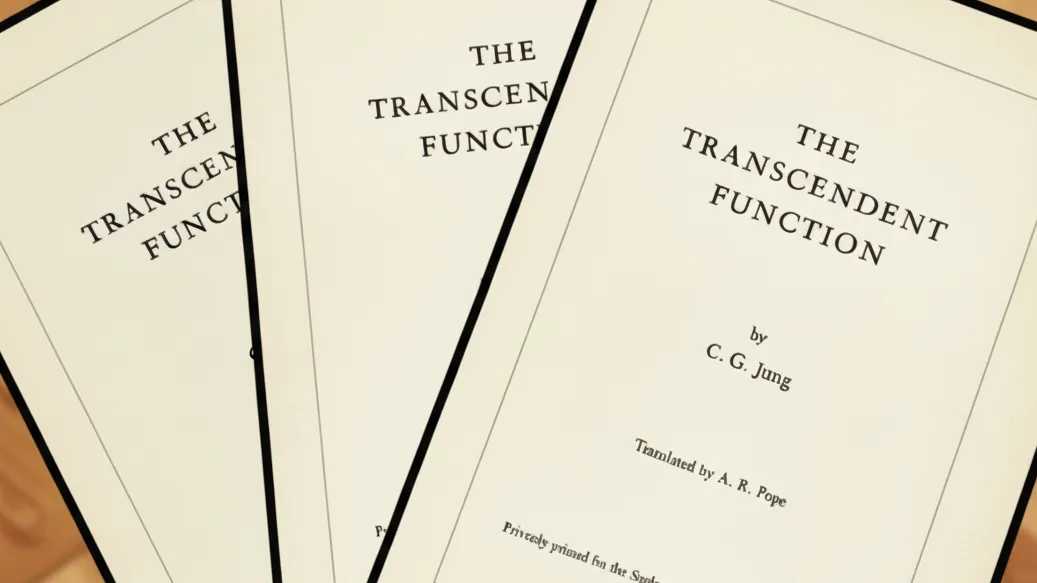
Introductory Note
When I was a student at the University of Georgia in the 1990s, I went deep into Jungian psychology. One of Jung's most intriguing concepts is the transcendent function. I first came across his essay in the Penguin volume Portable Jung. Later, I learned that an earlier version had been privately printed in Zurich for Jung's students. That version was translated into English by Richard Pope (listed as A. R. Pope in the translator note).
I managed to track down Richard Pope in Switzerland and wrote to him asking if he had any copies left from 1957. To my surprise, he did. He sent me one, signed it, and included a letter describing what the Jung Institute was like in those early days. It remains one of the most meaningful things I have ever received.
One of the students in 1952 was James Hillman, who later became well known as a writer and psychologist. Hillman had written the introduction to the booklet. I found a way to contact him as well, and he replied. He shared memories of the Institute and ended with a line I have never forgotten: "lore is gossip warmed over nicely." Hillman had a gift with words. At the time, his book The Soul's Code had just been published and he was already a best-selling author.
I even reached out to Marie-Louise von Franz and received a response. Unlike Pope and Hillman, who had been students, von Franz was like the professor. I was amazed that she also took the time to write back. In those days, these figures were like rock stars to me, and yet they were all warm, generous, and humble despite their reputations.
All of this had a purpose. I was writing a paper on the transcendent function for a psychology class. What follows is my very first attempt at understanding this complex idea. Even though it feels like a lifetime has passed, I still find these ideas as fascinating as when I first encountered them. I wish I could say that my grasp of Jung has deepened since then, but it has not, at least not in theory. What I do have is more lived experience, which helps in its own way. Still, these ideas remain as complex and elusive as we are to ourselves.
Philosophy in Jung's Transcendent Function
Last month I introduced C. G. Jung and his world of dreams. Since then, many readers have asked about the theoretical side of Jungian psychology. With Jung, you cannot wander far from dreams without losing the thread. One of my favorite ideas is the transcendent function. Below I sketch where it came from and how it evolved. I then add brief commentary on a few problems in the original 1916 essay, "The Transcendent Function."
By 1916 Jung had already articulated the philosophical driver of analytical psychology. When he later prefaced publication of the 1916 paper, he framed the central issue in plain terms: "How does one come to terms in practice with the unconscious?" That question remains current.
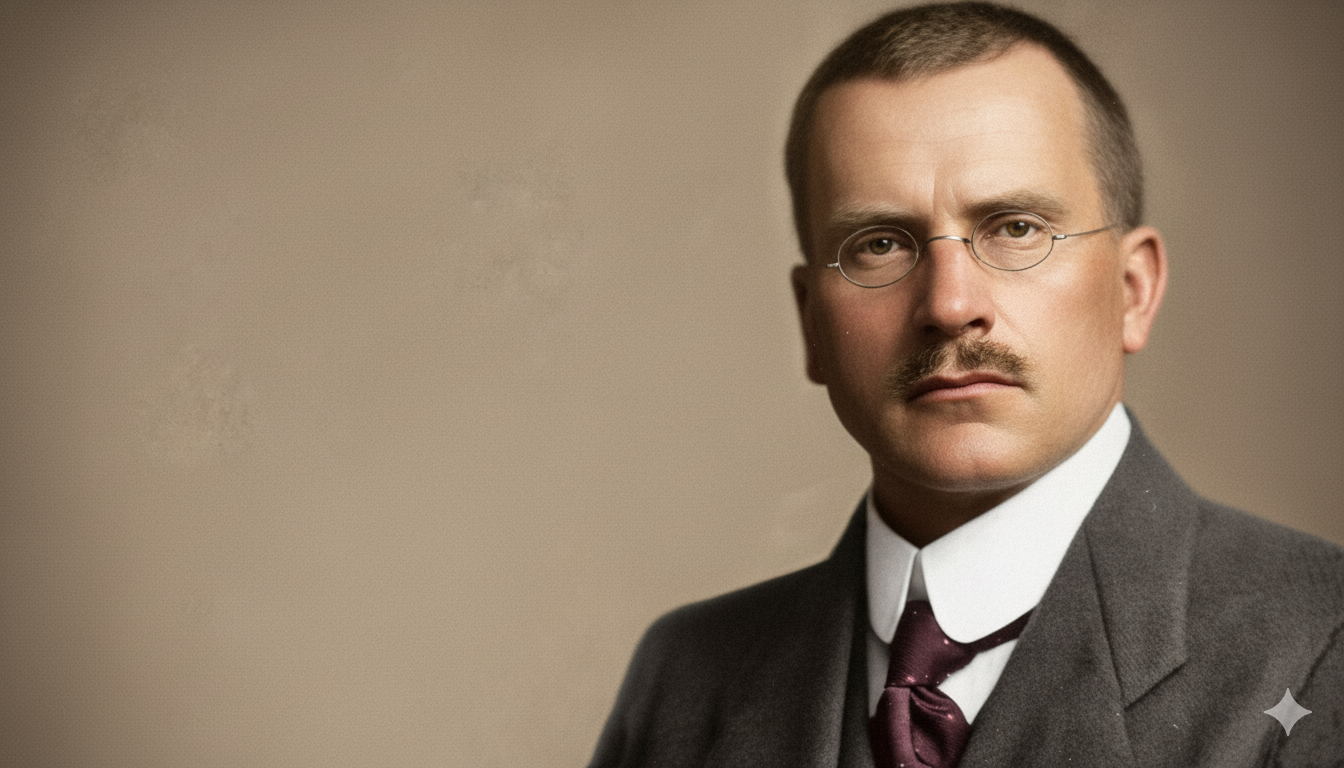
1916: context and aim
World War I was raging. Jung was serving with the Swiss Army near the Gotthard Pass when he wrote "The Transcendent Function," a text he later linked to his "confrontation with the unconscious." The essay remained unpublished until 1958, when he issued it with a short prefatory note. It now appears in Collected Works 8, The Structure and Dynamics of the Psyche.
Jung defines what the transcendent function does and how it works. He describes it as a natural process that appears in dreams, visions, and spontaneous fantasy. At the same time, it can be used methodically in analysis to mediate between conscious and unconscious material. In his words, "the shuttling to and fro of arguments and affects represents the transcendent function of opposites."
Method and mechanism
In practice, the work is twofold. First, unconscious material comes on its own in dreams and images. Second, the person engages it consciously, neither repressing nor identifying with it. Done well, this dialogue yields a third thing: a new standpoint that does not collapse into one pole or the other. Jung chose "transcendent" by analogy to a mathematical function handling real and imaginary components. The point is not mysticism. It is disciplined symbol formation that bridges opposites.
Natural process, not just a tool
The transcendent function is both an analytic method and an innate function of the psyche. In short: it is something we can practice and something the psyche does anyway when it self‑regulates. Later commentators make the same point in depth. See Jef Dehing's review of the concept and Daryl Sharp's clear lexicon entry on coniunctio, the "union of opposites" that gives birth to new possibilities.

The dialectic
One helpful way to read Jung here is to place him next to G. W. F. Hegel. Hegel's dialectic is not only a method of reasoning; he treats it as a dynamic in nature. In outline: we begin with fixed distinctions (Understanding), meet contradictions (Dialectic), and arrive at a new category that preserves and lifts what came before (Speculative reason). That triad clarifies how a living process can generate synthesis without erasing difference. The Stanford Encyclopedia of Philosophy provides a reliable map of this terrain.
This is where Jung the psychologist stands shoulder to shoulder with Jung the philosopher. He once called Hegel "that great psychologist in philosopher's garb." In context Jung is the mirror image: a philosopher in psychologist's garb, treating the transcendent function as a regulatory principle that proceeds dialectically.
Coniunctio and balance
Alchemical language helped Jung say what a synthesis feels like from the inside. Coniunctio names the conjunction of opposites and the birth of a third. Think of acid and base: each distinct, yet together forming a neutral salt with different properties. The same holds in psyche. When the poles are held together without collapse, a symbol forms and energy is released into a new attitude.
If you prefer a playground image, picture a seesaw (aka teeter‑totter). Balance feels boring until someone heavier sits down and throws their weight around. Up you go. The transcendent function keeps the weight distributed so you are not jerked into the air by whatever the unconscious has been sitting on. The balancing itself is energetic: it frees libido that was stuck in either/or.
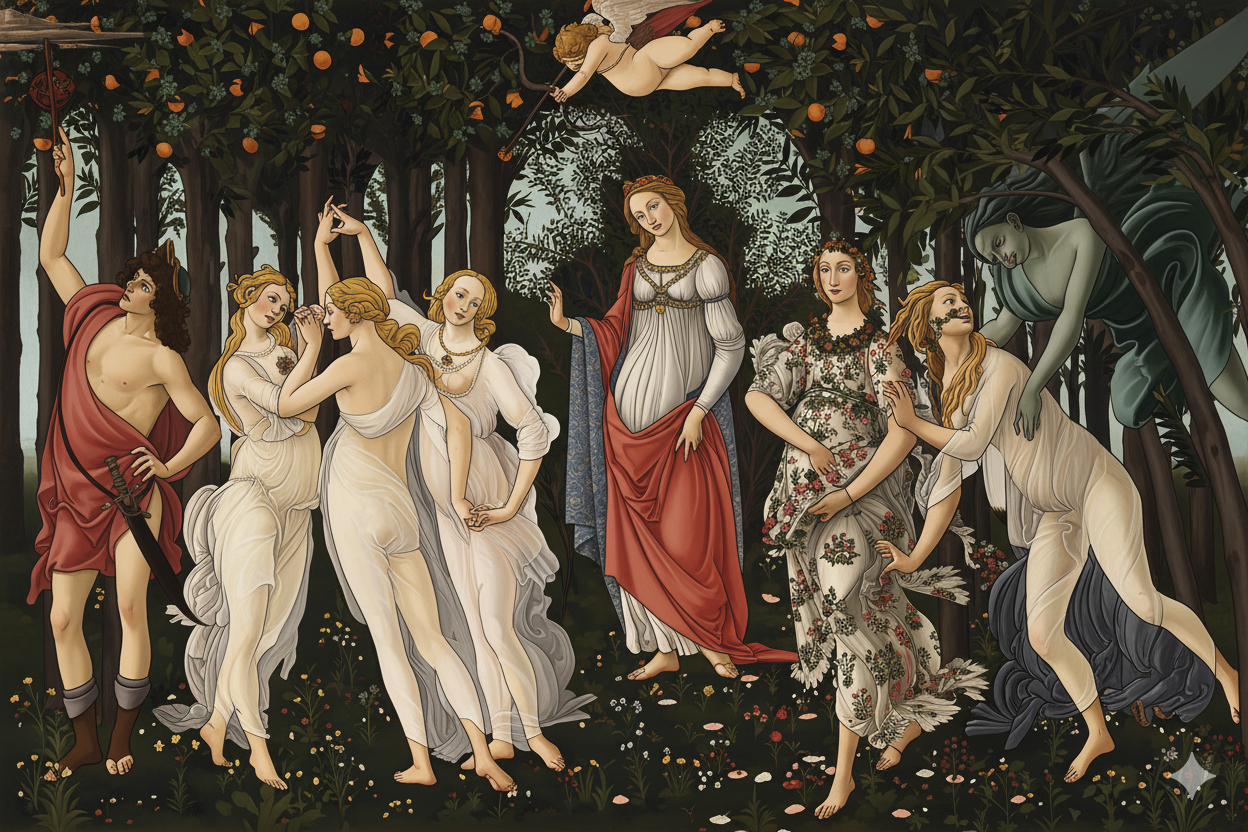
An allegory: Botticelli's Primavera
Edgar Wind reads Botticelli's Primavera as a danced dialectic. He notes a visible sequence of "opposition, concord, and concord in opposition," where a higher union appears without denying the tension that made it. This is an image of what Jung describes: a reconciliation that does not cancel difference, but composes with it.
Friedrich Nietzsche gives a crisp analogy: "procreation depends on the duality of the sexes, involving perpetual strife with only periodically intervening reconciliations." Art, he says, evolves through the same duality (Apollonian and Dionysian). That is a serviceable figure for Jung's "union of opposites" in psychic life.
What does this look like in ordinary life? Daryl Sharp puts it simply: if you can hold the tension between conflicting opposites, "a third possibility" eventually emerges. Outer facts may not change, but the attitude does, and the bound energy moves again. This is the transcendent function operating in real time.
Not for the lighthearted
Jung warns that this method is not a "plaything for children." The work can constellate powerful contents. If judgment holds too rigid a line for too long, pressure builds, and the unconscious tends to break through just when we most want to keep control. That is precisely when the method requires steadiness and respect for symbols.
Jung thought the modern, industrialized mind overvalues definiteness and directedness. That bias dulls our feel for spontaneous creativity and pushes symbols to the margins. In such a climate, the psyche no longer self‑regulates well. He likened it to "a machine whose speed‑regulation is so insensitive that it can continue to function to the point of self‑injury." The basic warning stands: numb the signals long enough and the compensation will come anyway, more violently.
We also prefer to deny problems. Jung's point is blunt: we want certainty without doubt and results without experiment. Facing the problem expands consciousness; evasion shrinks it. That is why the work of symbolization matters. It gives form to what would otherwise erupt.
Symbol at the threshold
At the door to the unconscious stands the symbol, with a life of its own. Most of us underestimate how much our moods and choices are influenced by what we have not yet faced. The longer we ignore it, the darker it becomes. And yet, if we can keep a bit of distance from the storm, we find a vantage point: not outside life, but outside compulsion. The symbol mediates that view by holding the opposites long enough for a third to appear.
Nikos Kazantzakis once wrote that the soul is "the arena where these two armies [the spirit and the flesh] have clashed and met." That is the human scene Jung takes seriously. The transcendent function names how we survive the clash and turn it into a real change of heart.
Books and primary texts
- Jung, C. G. 1916/1958/1970. The Transcendent Function. In The Structure and Dynamics of the Psyche, Collected Works 8, trans. R. F. C. Hull. Princeton, NJ: Princeton University Press. (Original ms. 1916; first publication 1958; CW 8 standard ed. 1970.)
- Jung, C. G. 1966. Two Essays on Analytical Psychology, Collected Works 7, 2nd ed., trans. R. F. C. Hull. Princeton, NJ: Princeton University Press.
- Jung, C. G. 1961/1963. Memories, Dreams, Reflections, recorded and ed. Aniela Jaffe; trans. Richard and Clara Winston. New York: Pantheon. (For the framing question cited in the 1958 preface to "The Transcendent Function," see CW 8 pp. 67-68.)
- Jung, C. G. 1950-1960. The Symbolic Life, Collected Works 18. Princeton, NJ: Princeton University Press. (Contains Jung's remark on Hegel as "that great psychologist in philosopher's garb," para. 1734.)
- Hannah, Barbara. 1976. Jung: His Life and Work. New York: G. P. Putnam's Sons. (Places the 1916 essay during Jung's Swiss Army service near the Gotthard Pass.)
- Nietzsche, Friedrich. 1872. The Birth of Tragedy. Public‑domain English trans. (e.g., W. A. Haussmann), Project Gutenberg eText 51356. Section 1 contains the "duality of the sexes" analogy quoted above.
- Kazantzakis, Nikos. 1955/1960. The Last Temptation of Christ, trans. P. A. Bien. New York: Simon & Schuster. (Source of "the soul is the arena..." quoted above.)
- Wind, Edgar. 1958. Pagan Mysteries in the Renaissance. New Haven, CT: Yale University Press. (Discussion of Botticelli's Primavera and the dance of opposites.)
Reference and secondary works
- Dehing, Jef. 1993. "The Transcendent Function." Journal of Analytical Psychology 38(3):221-236. (Critical reevaluation of Jung's concept; cited for the dual status as method and natural function.)
- Sharp, Daryl. 1988. The Survival Papers: Anatomy of a Midlife Crisis. Toronto: Inner City Books. (Pragmatic statement on "holding the tension of the opposites.")
- Sharp, Daryl. 1991. Jung Lexicon: A Primer of Terms and Concepts. Toronto: Inner City Books. (See "coniunctio" and related entries.)
- Inwood, Michael. 1992. A Hegel Dictionary. Oxford: Blackwell. (Useful for Understanding/Dialectic/Speculative reason.)
- Houlgate, Stephen (ed.). "G. W. F. Hegel." Stanford Encyclopedia of Philosophy. (Authoritative overview of Hegel's dialectic and conceptual triad.)


